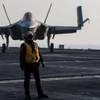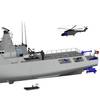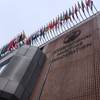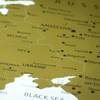Russia’s Inability to Dominate the Sea has Changed the Course of the War in Ukraine
Since Russia’s invasion of Ukraine a year ago, most of the fighting has been on land. However, there has also been a less visible – but nonetheless crucial – maritime dimension to the war across the full spectrum of tactical, strategic, economic and diplomatic considerations.
After land troops crossed the Ukraine border on February 24 2022, the Russian navy quickly secured control of the northwestern Black Sea. This meant it could contribute to the air campaign against Ukraine by launching cruise missiles from the sea. This diversified Russia’s attack vectors, thus increasing the chance of penetration by overwhelming Ukraine’s air defence systems.
This operational control gave the invaders the ability to threaten the important port city of Odesa with an amphibious assault. The prospect initially required Ukraine’s war planners to divert resources away from the main fronts in the east and north around Kyiv. It also enabled Russia to deny Ukraine access to and from its own ports, which resulted in a de facto maritime blockade of Ukraine.
But Russia failed to translate this early dominance into strategic effects by opening up a new front in Odesa. This has been attributed to the navy’s subordination to the objectives of Russia’s land forces, whose focus was elsewhere.
For its part, Ukraine was without an operational navy able to directly engage the Russian navy at sea. Its position was made all the more insecure due to the inability of its western allies to intervene at sea – because of the closure of the Turkish Straits and the risk of escalation in the case of any direct involvement of Nato ships.
But despite all this, Kyiv managed to undermine Russia’s naval dominance by demonstrating innovation and initiative.
Sinking the Moskva
Its first major victory was sinking the cruiser Moskva on April 14. In addition to the prestige of sinking the flagship of the Black Sea fleet, this exposed the shortcomings of Russia’s air defence onboard its surface ships.
The sinking of the Moskva demonstrated that the Russian navy could not operate safely in the vicinity of Ukraine’s coast, due to the threat from anti-ship missiles – both the Ukrainian-developed Neptune and western-supplied Harpoon missiles.
The Black Sea fleet surface ships have needed the protection of Russia’s naval air force, mainly land-based in Crimea. This limited their operational range to about 20 miles in order to benefit from full air support.
Another notable success was when Ukraine regained control over Snake Island, a small but strategically important outpost in the Black Sea (about 70 nautical miles south of Odesa) that had been taken by Russian forces in the opening days of the conflict.
Ukraine’s creative opportunism
Things began to move faster in August as Kyiv launched counterattacks, especially in the south. As part of this shift in momentum, Ukraine adopted a bold strategy of harassing Russian naval assets. This included an attack on the Black Sea fleet’s air arm at the Saky airbase in Crimea on August 9, followed on August 20 by a drone attack on the Black Sea Fleet headquarters in Sevastopol.
Maritime drones were then used on October 29 to target Russian warships in Sevastopol, highlighting the constant state of insecurity of the Russian navy, which was put in full “defence mode”.
In practice, with its surface fleet “hiding”, this reduced Moscow’s ability to plan for an amphibious assault on Odesa. It also limited its ability to strike from the sea, and restricted its initial geostrategic objective to control the southern coast of Ukraine from Crimea to Transnistria.
Importantly, it also affected the overall conduct of the war by enabling Ukraine to move its counter-offensive closer to Crimea.
The maritime supply chain
But with its limited navy, Ukraine has not been able to secure control of the sea. Moscow remains able to prohibit civilian traffic to and from Ukrainian ports, by making it too risky for shipping companies to operate outside the remit of the maritime corridor for grain exports – a deal brokered by the UN and Turkey, and agreed on July 22.
Russia’s denial of the northwestern Black Sea has been enough to prevent the shipment of grain and other agricultural products. This has led to increased food prices, hurting many developing nations. But Russia’s own lack of control over global supply chains has also contributed to the effectiveness of sanctions targeting its military-industrial base.
All major shipping companies bar the Chinese have suspended their operations to and from Russia. But this significant collective effort has come at a cost to shipping companies. Declining trade with Russia and the ban on Russian flagged, owned or operated ships has also affected business in western ports.
Seapower and global leadership
Despite reports that a new Russian offensive is impending, naval power is not expected to play a major role as it is unlikely that the Russian navy will consider opening a new front around Odesa. But the longer a war lasts, the more likely it is to be won by a coalition of maritime nations that can control the global supply chain.
Well aware of this, Russia stressed in its July 2022 maritime doctrine the need to consolidate its sea power. But it’s not clear how it can do this, given the current difficulties facing Russia’s naval-industrial base.
So while the war’s maritime dimension is limited, it still demonstrates that Kyiv has the capacity to seize opportunities created by Russia’s weakness at sea. And in a lengthy war – as in other lengthy conflicts – this could eventually tip the scales in Ukraine’s favor.
The author
Basil Germond, Professor, Department of Politics, Philosophy and Religion, Lancaster University
(Source: The Conversation)














